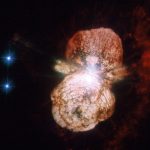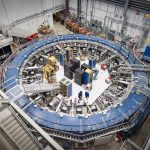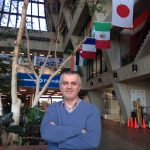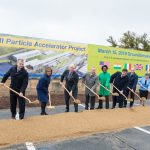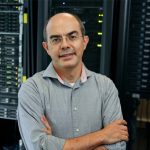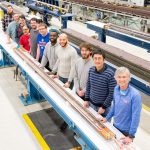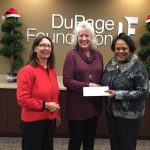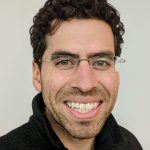Particle detectors recorded neutrinos from supernova SN1987A hours before telescopes saw the first light. Thirty years later, scientists around the world are eager to detect neutrinos from another one. The international Fermilab-hosted Deep Underground Neutrino Experiment will be looking for them. These neutrinos can tell us more about supernovae themselves and may hint at new physics that could upend the Standard Model of particle physics.
Fermilab features
Muon g-2 has begun its second run to search for hidden particles and forces. Muon g-2 collaborators have performed upgrades to improve the experiment’s precision and increase the amount of data it generates. As the experiment starts up again, scientists expect to make the world’s most precise measurement of the muon’s anomalous magnetic moment, which could tell us whether additional, undiscovered particles exist in the universe.
Swapan Chattopadhyay is one of 62 individuals elected this year as a Royal Society of Edinburgh fellow. Designated as a corresponding fellow, he has attained a high international standing in his discipline in the eyes of the RSE. Chattopadhyay researches the science and technology of particle and light beams and quantum sensors.
Scientist Jean-Paul Carneiro and collaborators in France are setting the stage for one of the world’s first autonomous particle accelerators. They will incorporate the world’s leading code for computing the dynamics of particle beams into a Fermilab prototype. Funding is provided through the FACCTS program, which fosters productive partnerships between Chicago-based and French researchers.
On March 15, Fermilab broke ground on PIP-II, a major new particle accelerator project at Fermilab. Dignitaries from the United States and international partners celebrated the start of the project at the groundbreaking ceremony. The PIP-II accelerator will power the long-term future of the laboratory’s research program, including the international Deep Underground Neutrino Experiment and a suite of on-site experiments.
The American Physical Society has recognized Fermilab and Northern Illinois University physicist Philippe Piot for his outstanding contributions as a referee for APS journals. APS’s highly selective Outstanding Referee program annually recognizes about 150 of the roughly 71,000 currently active referees.
The U.S. Department of Energy has approved the scope, cost and schedule for the U.S. LHC Accelerator Upgrade Project and has given the first approval for the purchase of materials. This project brings together scientists, engineers and technicians from national laboratories — such as Fermilab, Brookhaven, Berkeley, SLAC and Jefferson labs — to develop two cutting-edge technologies to advance the future of both the Large Hadron Collider and broader collider research.
Research has shown that the presence of trees and woody vegetation in grasslands can significantly reduce the area occupied by grassland birds. To maximize usable habitat in the Eola grasslands at Fermilab, the first step is to clear the open fields of woody vegetation and trees. FNA received this grant to support the first phase of the project and hire a contractor to remove trees from this area.
Fermilab engineer Ryan Rivera receives the consortium’s Young Alumni Leadership Award. GEM’s mission is to enhance the value of the nation’s human capital by increasing the participation of underrepresented groups at the master’s and doctoral levels in engineering and science. A GEM alumnus, Rivera is recognized for his influence, commitment and passion in creating better opportunities for underrepresented groups in STEM-related fields.

